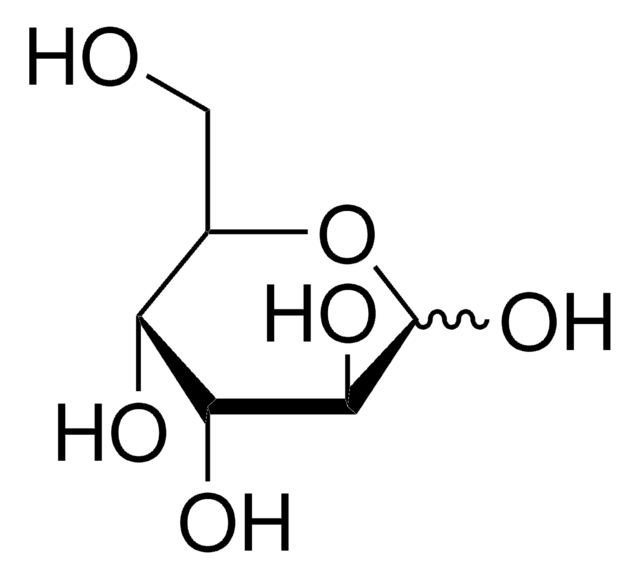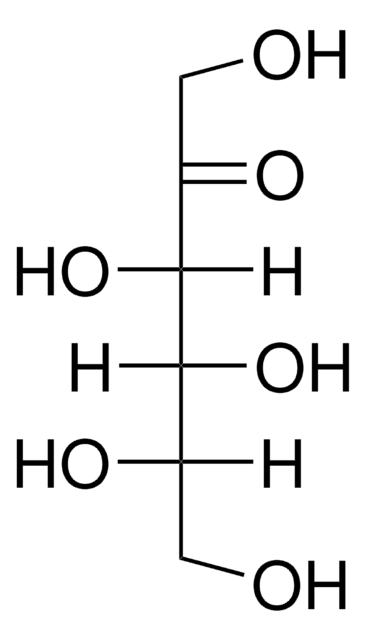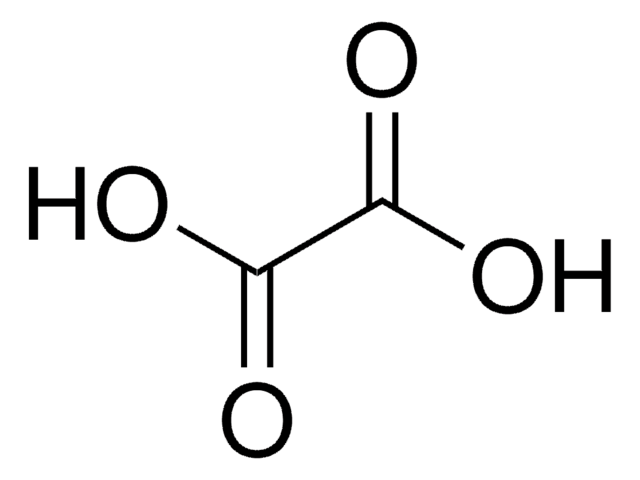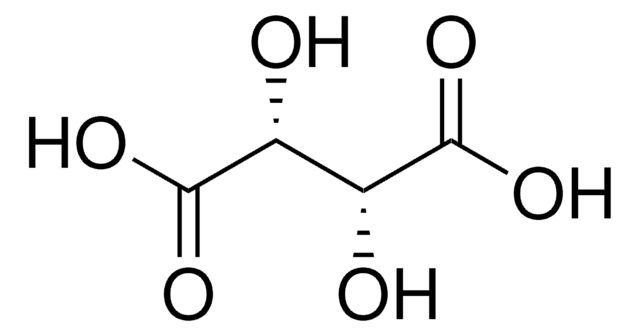A6390
β-D-Allose
rare aldohexose sugar
Synonym(e):
β-D-Allopyranose
About This Item
Empfohlene Produkte
Qualitätsniveau
Assay
≥98% (HPLC)
≥98% (TLC)
Form
powder
Optische Aktivität
[α]/D 12.00 to 16.00 °, c = 45.00-55.00 mg/mL in water
Methode(n)
HPLC: suitable
thin layer chromatography (TLC): suitable
Verunreinigungen
<2.00% water (Karl Fischer)
Farbe
white to yellow cast
Löslichkeit
water: 49.00-51.00 mg/mL, clear, colorless to light yellow
SMILES String
OC[C@H]1O[C@@H](O)[C@H](O)[C@H](O)[C@@H]1O
InChI
1S/C6H12O6/c7-1-2-3(8)4(9)5(10)6(11)12-2/h2-11H,1H2/t2-,3-,4-,5-,6-/m1/s1
InChIKey
WQZGKKKJIJFFOK-QZABAPFNSA-N
Anwendung
Biochem./physiol. Wirkung
Sonstige Hinweise
Lagerklassenschlüssel
11 - Combustible Solids
WGK
WGK 3
Flammpunkt (°F)
Not applicable
Flammpunkt (°C)
Not applicable
Persönliche Schutzausrüstung
Eyeshields, Gloves, type N95 (US)
Analysenzertifikate (COA)
Suchen Sie nach Analysenzertifikate (COA), indem Sie die Lot-/Chargennummer des Produkts eingeben. Lot- und Chargennummern sind auf dem Produktetikett hinter den Wörtern ‘Lot’ oder ‘Batch’ (Lot oder Charge) zu finden.
Besitzen Sie dieses Produkt bereits?
In der Dokumentenbibliothek finden Sie die Dokumentation zu den Produkten, die Sie kürzlich erworben haben.
Unser Team von Wissenschaftlern verfügt über Erfahrung in allen Forschungsbereichen einschließlich Life Science, Materialwissenschaften, chemischer Synthese, Chromatographie, Analytik und vielen mehr..
Setzen Sie sich mit dem technischen Dienst in Verbindung.








